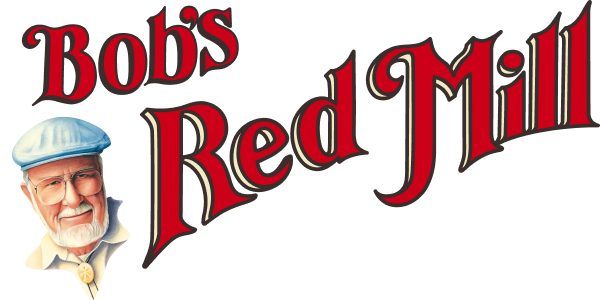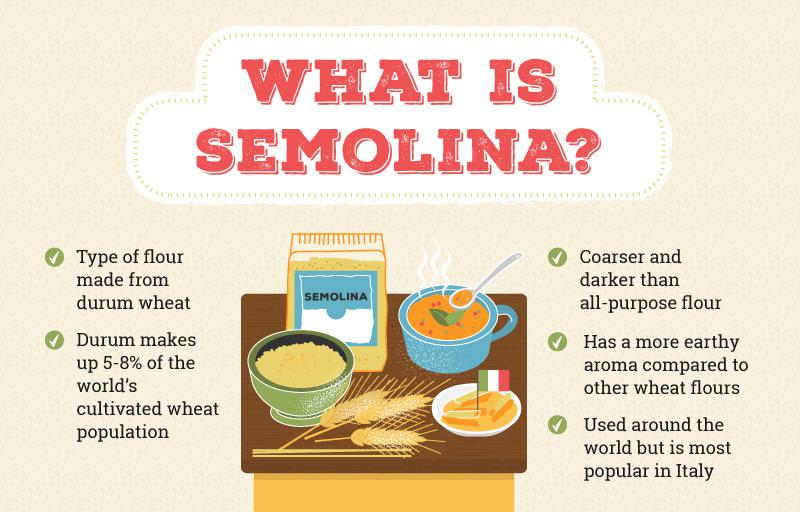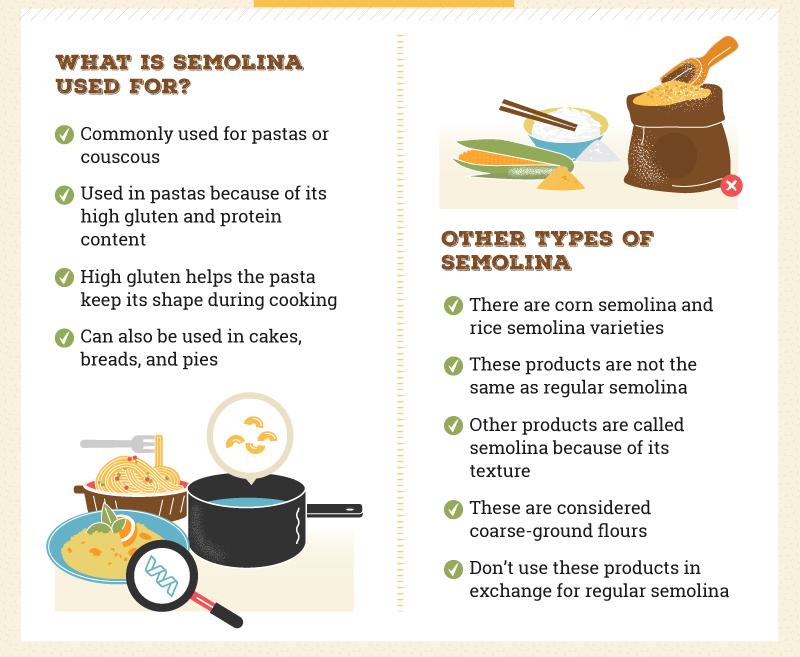




 If you do not have a sensitivity to wheat or gluten, then you are likely okay to consume semolina--in moderation, of course. There are actually several health benefits to eating semolina that you probably do not know about. The first is that semolina is high in protein, with almost 6 grams per serving! It is also rich in B vitamins, including folate and thiamine, which help create energy and support brain function. Selenium is another benefit to semolina, one that serves as an antioxidant to help prevent heart disease! Semolina is a little high in carbohydrates, though, so if you are watching your carb intake then you should only indulge periodically! In moderation, however, semolina should be fine to consume for anyone who does not have a wheat sensitivity!
If you do not have a sensitivity to wheat or gluten, then you are likely okay to consume semolina--in moderation, of course. There are actually several health benefits to eating semolina that you probably do not know about. The first is that semolina is high in protein, with almost 6 grams per serving! It is also rich in B vitamins, including folate and thiamine, which help create energy and support brain function. Selenium is another benefit to semolina, one that serves as an antioxidant to help prevent heart disease! Semolina is a little high in carbohydrates, though, so if you are watching your carb intake then you should only indulge periodically! In moderation, however, semolina should be fine to consume for anyone who does not have a wheat sensitivity!
 Are you feeling a little less threatened by semolina now? It turns out, semolina is just like any other flour that you may already be using or have used in the past! It simply provides a higher gluten and protein content for that perfect al dente noodle to share with your significant other, Lady and the Tramp style if you are lucky! No matter how you like to use yours--for pasta, bread, couscous, or any other use--semolina is a delicious flour that you will love working with!
Are you feeling a little less threatened by semolina now? It turns out, semolina is just like any other flour that you may already be using or have used in the past! It simply provides a higher gluten and protein content for that perfect al dente noodle to share with your significant other, Lady and the Tramp style if you are lucky! No matter how you like to use yours--for pasta, bread, couscous, or any other use--semolina is a delicious flour that you will love working with!
